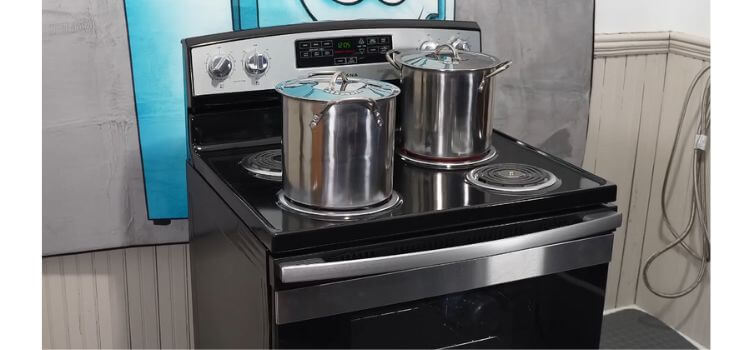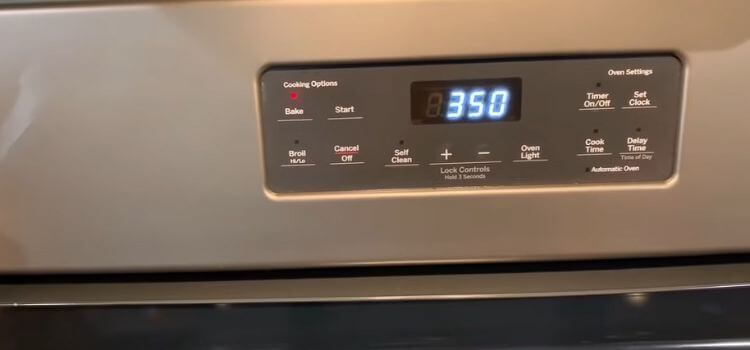Accidentally leaving a gas stove on without a flame can be extremely dangerous. It poses risks of gas leaks and potential explosions.
Gas stoves are common in many households. They offer quick and efficient cooking. However, forgetting to turn off the gas stove or leaving it on without a flame can lead to serious hazards. Natural gas is highly flammable and can accumulate quickly in enclosed spaces.
This creates an environment ripe for explosions or fires. Even without ignition, inhaling gas can cause health issues like headaches, nausea, and dizziness. It’s crucial to act immediately if you realize the gas stove was left on. Open windows to ventilate the area, turn off the gas supply, and avoid using electrical switches. Always stay alert when using gas appliances to ensure safety.
The Risks Of Unattended Gas Stoves
Leaving a gas stove on without a flame is very dangerous. This can lead to serious accidents and health problems. Understanding these risks can help keep you safe.
Potential For Gas Buildup
When a gas stove is left on without a flame, gas can build up in your home. Natural gas is colorless and odorless. Gas companies add a smell, like rotten eggs, so you can detect it.
Inhaling too much gas can cause dizziness, headaches, and nausea. High levels of gas can lead to unconsciousness or even death. Always make sure your stove is off when not in use.
Threat Of Fire And Explosion
Unattended gas stoves pose a significant fire risk. If gas accumulates and meets a spark, it can ignite. This can cause a fire or even an explosion, which can destroy property and harm people.
Even small flames, like from a lighter or match, can cause a big problem. Make sure your stove is off to prevent such disasters. Always double-check before leaving the kitchen.
Immediate Steps To Take
Leaving the gas stove on without a flame can be dangerous. Knowing the immediate steps to take can save lives and prevent damage. Follow these critical steps to stay safe.
Shut Off The Gas
Immediately turn off the gas to halt the flow. Locate the gas valve, usually near the stove. Turn it to the off position. This will prevent more gas from leaking into your home.
Ventilate The Area
Open windows and doors to allow the flow of fresh air. This will help disperse the gas. Use fans if available to speed up the process. Avoid turning on electrical appliances as they might spark.
Evacuate If Necessary
Leave the house if you smell a strong gas odor. This indicates a high concentration of gas. Call emergency services from outside. Do not re-enter until it is declared safe.
Assessing The Situation
Accidentally leaving the gas stove on without a flame can be scary. You need to act quickly to ensure safety. First, you must assess the situation. Check for gas leaks and inspect the stove’s condition.
Checking For Gas Leaks
Gas leaks pose a serious risk. Natural gas smells like rotten eggs. If you smell this, there might be a leak. Do not use any electrical switches or open flames, as this can ignite the gas.
- Open all windows and doors to aerate the area.
- Check the knobs on the stove. Make sure they are in the “off” position.
- Leave the house if you suspect a strong gas leak. Call emergency services from outside.
Inspecting The Stove’s Condition
Once you’ve checked for leaks, inspect the stove itself. Look at the burners and the control knobs. Make sure they are not damaged.
- Ensure all burners are off.
- Check for any visible damage or debris on the stove.
- If the stove appears damaged, do not use it until repaired by a professional.
Preventive Measures
Keeping your home safe from gas-related accidents is crucial. Taking preventive measures can help you avoid dangerous situations. Here are some effective steps to ensure your safety.
Regular Maintenance Checks
Regular maintenance checks are vital for ensuring the safety of your gas stove. Arrange for a professional inspection once per year. This helps in detecting any leaks or malfunctioning parts early.
You can also perform some basic checks yourself. Make sure all burners ignite properly. Check for any unusual smells when the stove is off. If you notice anything suspicious, contact a professional immediately.
Keeping the stove clean also reduces the risk of accidents. Food particles can clog burners, causing gas to escape. Clean your stove regularly to maintain its efficiency and safety.
Installing Gas Detectors
Installing gas detectors is a smart move for any household. These devices can detect gas leaks early, alerting you before the situation becomes dangerous. Place gas detectors near your stove and in other key areas of your home.
There are different types of gas detectors available. Select one that is user-friendly and dependable. Most detectors come with alarm systems that alert you with a loud sound. Some advanced models even connect to your smartphone.
Make sure to test your gas detectors regularly. Replace the batteries as needed to ensure they are always functional. A working gas detector can save lives, making it an essential part of your home safety plan.
Creating A Safe Kitchen Environment
Organizing Cookware
Properly organizing cookware can help prevent kitchen mishaps. Keep pots and pans within easy reach. This reduces the chance of knocking over items while cooking.
- Store heavy pots on lower shelves.
- Use hooks for frequently used utensils.
- Separate sharp tools from other utensils.
Having a designated place for each item makes cooking more efficient. It also helps in quickly identifying if something is missing or out of place.
Establishing Safety Routines
Creating safety routines can minimize kitchen risks. Always check that burners are off before leaving the kitchen.
- Make it a habit to double-check stove knobs.
- Install a gas detector for added safety.
- Keep a fire extinguisher nearby.
Educate all family members about kitchen safety. Ensure everyone knows how to use kitchen appliances correctly.
Educating Household Members
Educating household members about gas stove safety is crucial. Everyone should know how to handle gas appliances. This knowledge can prevent dangerous situations. Here, we’ll cover Safety Protocols for Gas Appliances and Emergency Response Training.
Safety Protocols For Gas Appliances
- Always check the stove before leaving the kitchen.
- Never leave cooking unattended on the stove.
- Install a gas detector in the kitchen.
- Ensure all knobs are turned off after cooking.
- Teach kids to never touch stove knobs.
A gas detector can save lives. It alerts you to gas leaks early. Teach everyone how to use it. Ensure everyone knows the smell of gas. This helps identify leaks quickly.
Emergency Response Training
- Recognize the smell of gas.
- Immediately turn off the gas supply.
- Open windows and doors for ventilation.
- Evacuate the house if necessary.
- Call emergency services from a safe location.
Train everyone on these steps. Practice regularly. This ensures everyone knows what to do. Keep emergency numbers handy. Place them on the refrigerator or by the phone. Make sure kids know how to dial for help.
Investing In Safety Upgrades
Leaving a gas stove on without a flame is potentially hazardous. To avoid accidents, consider investing in safety upgrades. These upgrades can help keep your home and loved ones safe.
Automatic Shut-off Devices
Automatic shut-off devices are smart tools that turn off your stove if no flame is detected. They can prevent gas leaks and fires. These tools are simple to install and operate.
- Flame Failure Devices: These detect when a flame goes out and turn off the gas.
- Timer-based Shut-offs: These turn off the stove after a set time.
- Motion Sensors: These turn off the stove if no movement is detected for a while.
Choosing Safer Appliance Models
Newer gas stove models often come with built-in safety features. When buying a new stove, check for these features.
| Feature | Benefit |
|---|---|
| Flame Supervision Devices (FSD) | If the flame goes out, stop the gas supply. |
| Child Lock | Prevents accidental activation by children. |
| Automatic Ignition | Reduces the chance of gas leaks. |
| Advanced Alarms | Report any gas leak to you. |
Frequently Asked Questions
What Should I Do If I Left The Gas Stove On?
If you left the gas stove on without a flame, immediately turn it off. Open windows for ventilation. Avoid igniting any flames and leave the area if the smell is strong.
Is It Dangerous To Leave The Gas Stove On?
Yes, it is dangerous. Leaving a gas stove on without a flame can cause gas leaks, leading to potential fire hazards or explosions.
How Can I Detect A Gas Leak?
You can detect a gas leak by smelling for a strong odor similar to rotten eggs. Additionally, listen for hissing sounds near the stove.
How Long Can Gas Leak Before It Becomes Dangerous?
Even a short exposure to a gas leak is dangerous. Gas leaks can quickly accumulate and pose serious health and safety risks.
Conclusion
Leaving the gas stove on without a flame is dangerous. Always double-check before leaving the kitchen. Install gas detectors for added safety. Educate family members on gas safety to prevent accidents. Prioritize safety to ensure a secure home environment.
Stay vigilant and protect your loved ones from potential hazards.


